We need your help! Join our growing army. Click here to subscribe to ad-free Revolver. Or give a one-time or a recurring donation during this critical time.
Earlier this week the DOJ charged infamous Fedsurrection provocateur Ray Epps with a single misdemeanor account of “disorderly conduct. Despite what the increasingly desperate regime media would have us think, it is simply ridiculous to think that such a weak misdemeanor charge, issued nearly three years after January 6th, could possibly quell suspicions regarding the true nature of Epps’ involvement in the January 6th Fedsurrection.
As demonstrated extensively in a recent Revolver piece, this recent move only makes the regime look clumsy and utterly desperate to salvage the crumbling narrative regarding Epps and January 6th. The great January 6 journalist Julie Kelly has additionally speculated that the timing of the misdemeanor charge suggests that it could have been specifically intended to allow Epps (and potentially the feds) to avoid the potential disaster of having Epps testify as a witness in the case of another January 6th defendant with whom he interacted. This is precisely what happened in the case of Steve Robeson, one of the many informants who participated in the disgraced Michigan “Fednapping” entrapment plot, who was conveniently slapped with a bogus gun charge just in time to prevent him from testifying in the trials of the other alleged “plotters.”
Yesterday, the government released its meager 14-page “Statement of Offense” for James Ray Epps Sr. (Ray Epps’ full legal name) to accompany Epps’ guilty plea. After reading this document, it is still clearer that the DOJ’s decision to charge Ray Epps is just as disingenuous as Ray Epps’ participation in the events of January 6th. As an exercise, we will go through the statement of offense’s description of Epps’ behavior and compare it to what is already in the public record.
The Statement of Offense begins with an ever-so-scant description of Ray Epps’ behavior on January 5th. Readers will recall that Ray Epps was out and about on BLM Plaza in Washington, D.C., on the evening of the 5th, famously urging crowds to go into the Capitol the next day. This was the scene featured in the now iconic viral videos of Epps (clips one and two of the below compilation of Epps’ “greatest hits”, as it were):
I give you Ray Epps, the only Jan 6 participant the NYT, 60 Minutes, Adam Kinzinger, and the DOJ will defend! pic.twitter.com/fPaGan9oys
— Darren J. Beattie 🌐 (@DarrenJBeattie) July 10, 2023
Here is the Statement of Offense’s description of Epps’ behavior on the evening of the 5th:
This brief, almost perfunctory description completely fails to capture the scope, focus, and dedication Epps exhibited in proselytizing his mission to the crowd to go into the Capitol the next day. For some context, it is important to remember that that evening was a scene of conflict between BLM and Antifa and Trump supporters. Indeed, there were cases of Antifa attacking Trump supporters, including women, thereby agitating the crowds of Trump supporters to the threat and social menace that was BLM and Antifa. One curious feature of Ray Epps’ behavior was his incredible persistence in injecting himself into various crowds and reminding them to stay focused on the mission, that is, the mission to go into the Capitol the next day. Epps’ persistently urging the crowd to “stay focused” and efforts to redirect the crowd from focusing on BLM and other matters provide context for the most iconic Ray Epps clip from that evening.
Clip 1:
In the following clip, from slightly earlier in the evening, Epps gives the same exact spiel, almost as if his lines were practiced and rehearsed. Note how Epps deploys the same preface of “I probably shouldn’t say this because I’ll probably get arrested” before making his same Capitol invasion pitch and delivers the same theatrical pause after “in” when he tells them: “We need to go in to the Capitol.”
Of course, this completely puts the lie to Ray Epps’ testimony to authorities that he simply thought the Capitol would be open on the 6th and it would be perfectly legal to walk in.
Clip 2:
For additional context and perspective for the first exhortation to go “into the Capitol”, the following footage is quite helpful. Note that it features a woman with a bullhorn addressing the crowd with various grievances pertaining to COVID, BLM, and George Soros, among other things. Ray Epps injects himself into the interaction to keep the crowd focused. “We are here to do something. It is not to mess with Antifa; it is not to mess with Black Lives Matter… but listen, we’re here to make a difference with the morons making decisions.” He then went on to clarify exactly what that would mean, exhorting the crowd to go into the Capitol (at the 2:25 mark, he can be heard in the background giving the exhortation presented more clearly in Clip 1 above).
Here’s a fun supercut we put together in a previous piece of Epps telling other protesters “We need to go inside the Capitol”—and that everything besides that singular objective was “losing focus,” “a distraction”, “doesn’t matter,” and “not what we’re here for.”
At one point, when forced to think on his feet, Epps clumsily blurted out that the Capitol was the enemy—as if to express some deeply rooted vendetta against neoclassical architecture!
Although we can’t fully confirm it due to poor audio, this little discussed clip certainly seems to depict Epps coming straight out and saying that “we’re here to storm the Capitol.” For this particular clip, we’ll let the readers judge for themselves.
"We're here to storm the Capitol" – Ray Epps pic.twitter.com/NZaWc3oTcz
— 🇺🇸 (@FreeStateWill) August 2, 2023
To conclude our coverage of Ray Epps’ activities on the 5th, we will note the following amusing exchange in which a young rallygoer expresses skepticism that Epps will follow through on the mission to storm the Capitol. Epps’ response is rather telling, as if to say, “You just wait and see, kid.”
The above should provide a pretty strong flavor of just how singularly dedicated Ray Epps was to the mission of storming the Capitol on the evening before January 6th.
None of this is, of course, captured in the Statement of Offense.
The Statement of Offense then goes on to chronicle Epps’ activities on the 6th. Again, we see that the statement is remarkably, frustratingly, and suspiciously sparse. Here, for instance, is the statement’s characterization of Epps’ behavior in the morning before Trump’s speech:
Again, this sparse treatment simply fails to capture how Epps persisted with his obsession with getting people to the Capitol. Ray Epps told authorities that he traveled to D.C. in order to attend Trump’s speech with his son. Trump wasn’t scheduled to speak until noon, and yet Ray Epps is caught on camera bright and early directing people to the Capitol (the idea that he’s so bizarrely and doggedly fixated upon).
Here’s Ray Epps in the 9 o’clock hour in the morning (over two hours before Trump was to begin his speech), already on mission:
And here’s Ray Epps around 10:30 a.m.:
To put this all in context, Ray Epps flew 2,300 miles from Phoenix, Arizona, to Washington, D.C., for a Trump rally, supposedly as a Trump supporter.
Epps arrived at the rally entrance more than two hours early, camped out to constantly shout recruiting instructions about coming to the Capitol after the speech, but then skipped out on the speech itself. What did he skip the speech for? Well, he just happened to saunter on over to and preposition himself at the location that just happened to be the spot where the first and decisive breach of the Capitol grounds took place. Here’s how the Statement of Offense describes it:
Here is video footage of the events described above, plus a crucial exchange that is inexplicably left out of the Statement of Offense:
Here is the exchange in question, isolated:
The operative phrase in this exchange is Epps’ “when we go in,” indicating that to Epps, entering the Capitol was just as much a done deal as it had been the evening before when he first exhorted the crowd to go into the Capitol. Incidentally, the individual Epps is talking to in that exchange played an active role in breaching the Capitol on both the west and east side, and did end up going into the Capitol.
On the basis of exactly this type of exchange, the DOJ has charged January 6 defendants with very serious conspiracy charges. But not Epps, of course.
How is this not a basis for a conspiracy charge?
For some perspective, Jan 6 defendent George Tanios faces serious conspiracy charges for saying "no no not yet it's still early" when his alleged co-conspirator asked for bear spray pic.twitter.com/q0ZZhcjWs8
— Darren J. Beattie 🌐 (@DarrenJBeattie) July 14, 2022
The following compilation provides a sense of the sheer scope and comprehensiveness of Epps’ involvement in January 6th after the barricades were breached. Epps was a veritable “Where’s Waldo?”. He was everywhere.
And of course, after the Capitol was indeed stormed, Epps curiously told the crowd that they had done what they came there to do.
The above clips and narrative are not exhaustive, but they provide a serviceable representative sample of the scope of Epps’ behavior related to January 5th and 6th. The notion that he could get off with this on a mere misdemeanor charge almost three years later defies any innocent explanation, especially when one looks at the standards of prosecution applied to other defendants.
There is one more biographical detail about Epps that is relevant to January 6th that the Statement of Offense curiously leaves out entirely, and that is the fact that Epps once had a leadership role in the Oath Keepers as the president of its Arizona chapter. The Oath Keepers are arguably the most demonized and heavily prosecuted militia group associated with January 6th. For all defendants who had even the remotest connection with the Oath Keepers, the charging documents were sure to blow that up and make it a huge deal. In just about every case the DOJ attached a conspiracy charge for mere membership. Many of those described as Oath Keepers–even Oath Keepers with leadership positions–weren’t even Oath Keepers at all, like the aforementioned Thomas Caldwell.
In fact, Oath Keeper affiliation was considered so significant that the DOJ even mentioned it in the headline of its charging announcements, such as in the case of former Iced Earth guitarist Jon Schafer:
Ray Epps had not only been the head of his entire state’s chapter of the Oath Keepers, he had on several occasions interacted with Oath Keeper founder and leader Stewart Rhodes, who was convicted of seditious conspiracy and given the most severe January 6th sentence, second only to Proud Boy leader Enrique Tarrio, who received 22 years.
Here you can see Ray Epps and Stewart Rhodes marching side by side at a march they organized while Epps was in charge of Arizona. They are the duo chatting with each other immediately after the flagbearers:
Here’s Epps and Rhodes at a memorial service together:
And here you can see a joint hometown buffet the duo hosted in Arizona:
It is important to emphasize that, to the best of our knowledge, Epps had no longer had any leadership or membership role by January 6, 2021. But even if this is so, and his membership and prior association with Rhodes were a mere unhappy coincidence, the fact that the media and the DOJ charging documents don’t so much as mention Epps’ Oath Keeper history shows just how aggressively he is being protected.
Any fair-minded person who absorbs the material above and thinks there’s nothing glaringly suspicious—damning even—about the unusual protection Epps has enjoyed relative to his behavior and to the standards applied to other January 6 defendants needs to get his head checked. Remarkably, the DOJ seems to have convicted numerous January 6 defendants of serious conspiracy charges on the flimsiest of evidence and yet reserves its mercy, its leniency, and all of its protective capacities to shelter the one January 6 participant who acknowledged that “he orchestrated it,” and credibly so.
SUPPORT REVOLVER — DONATE — SUBSCRIBE — NEWSFEED — GAB — GETTR — TRUTH SOCIAL — TWITTER
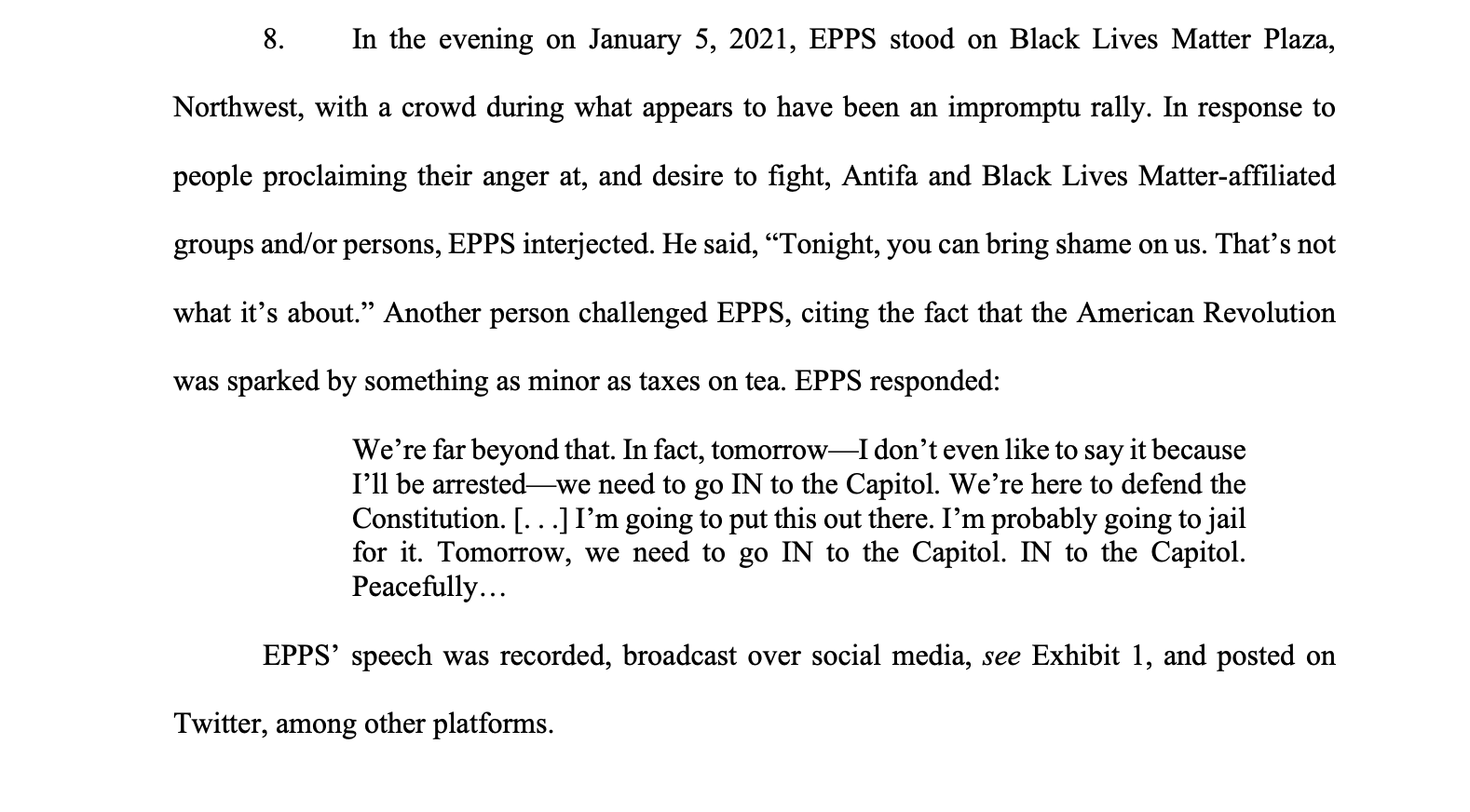
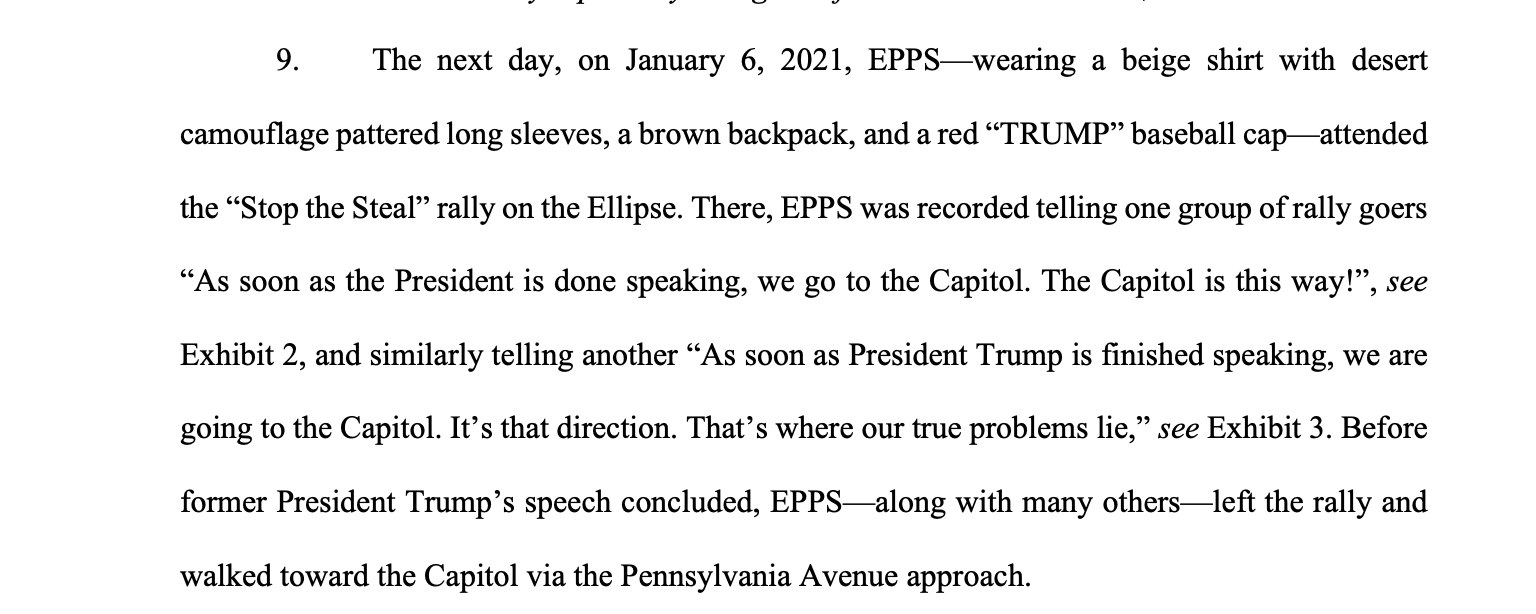
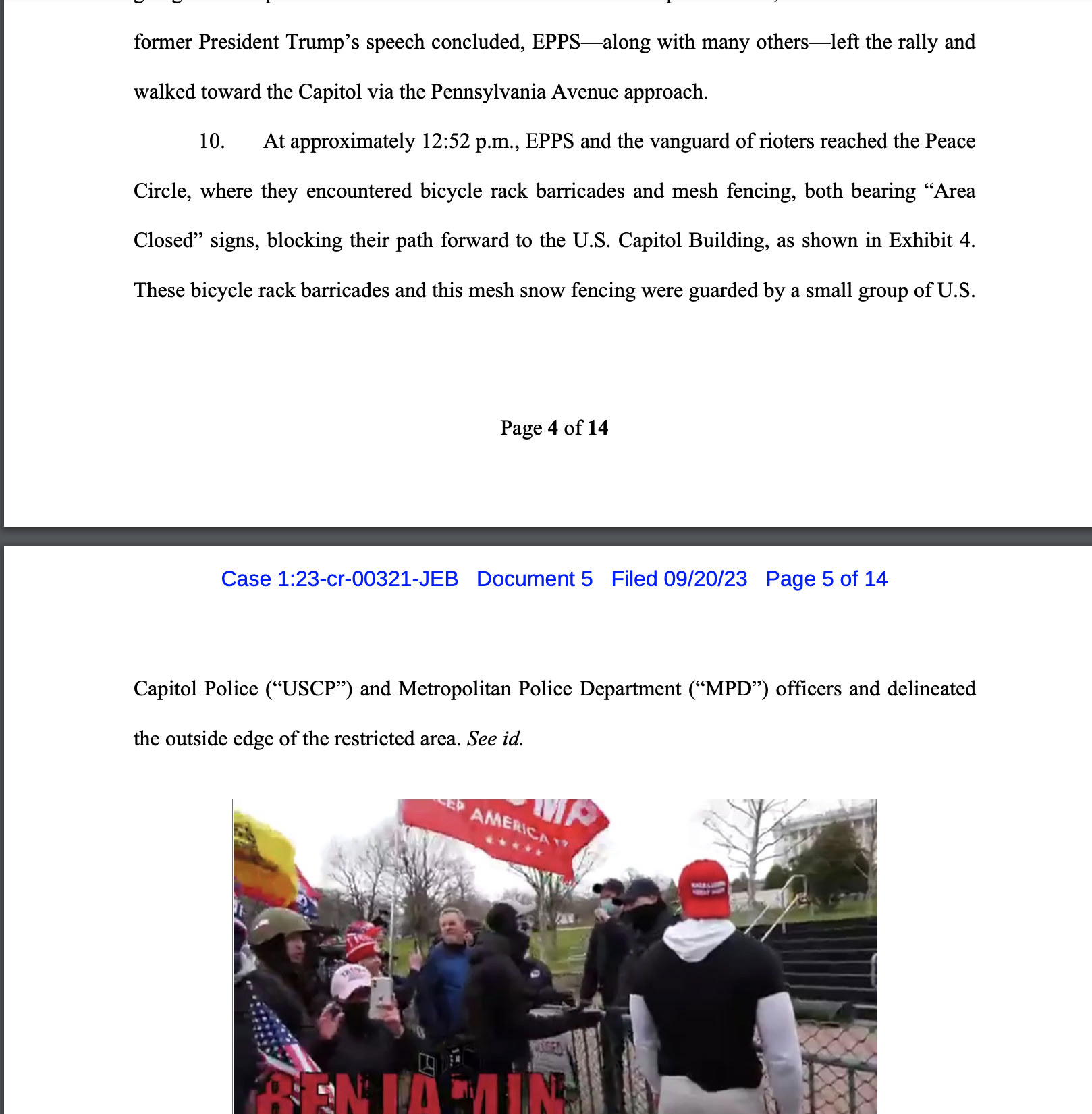
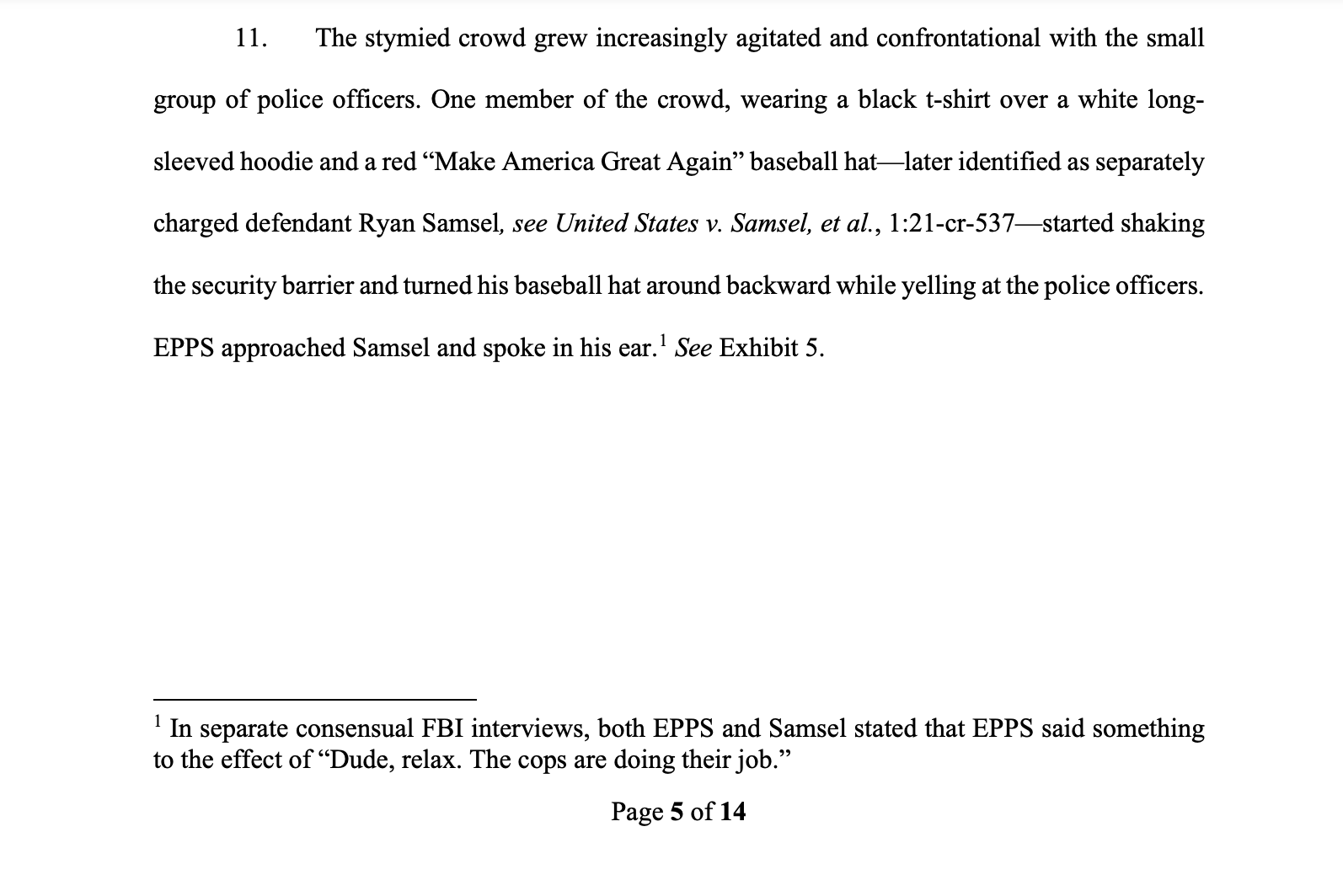
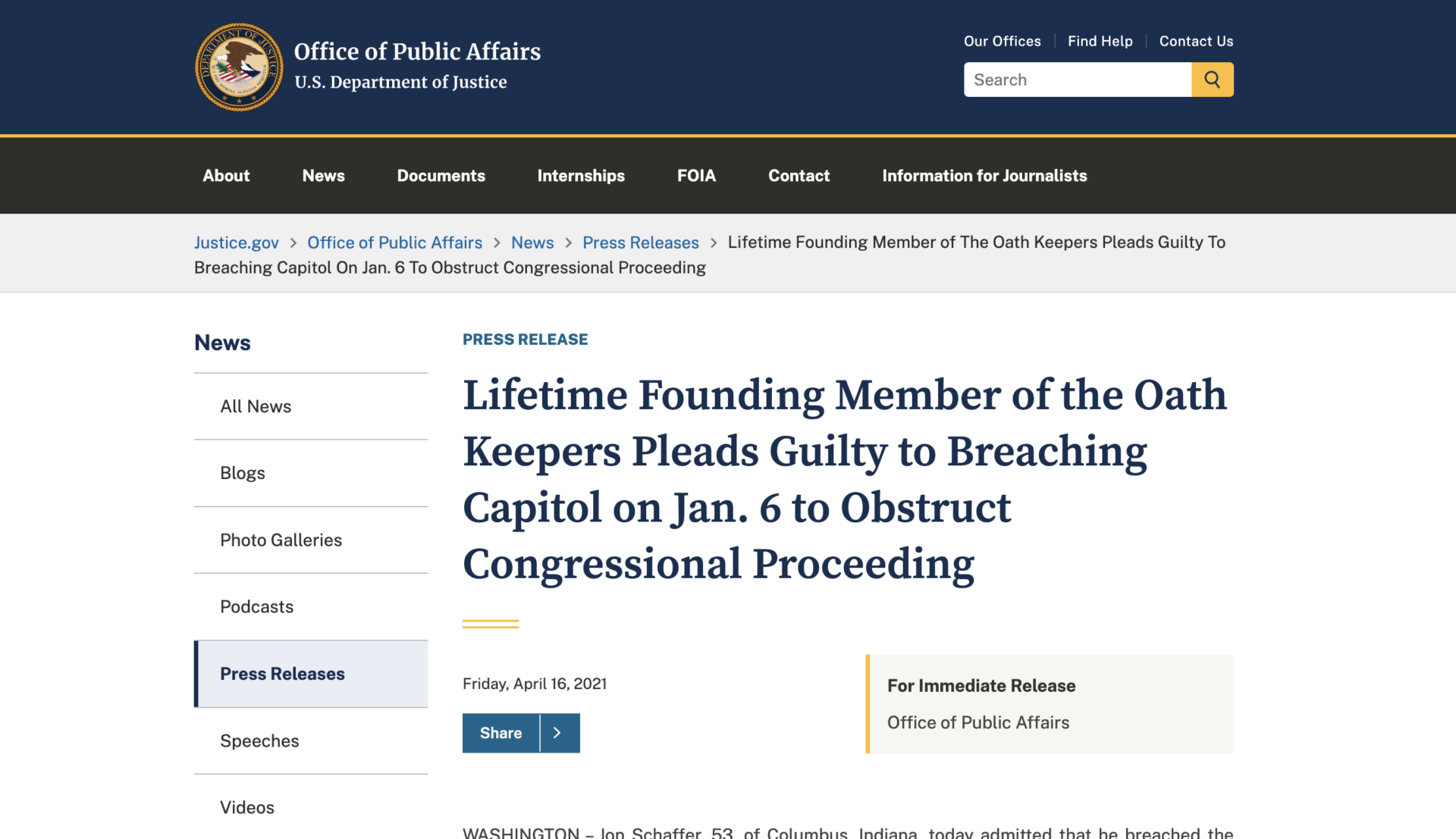


Join the Discussion